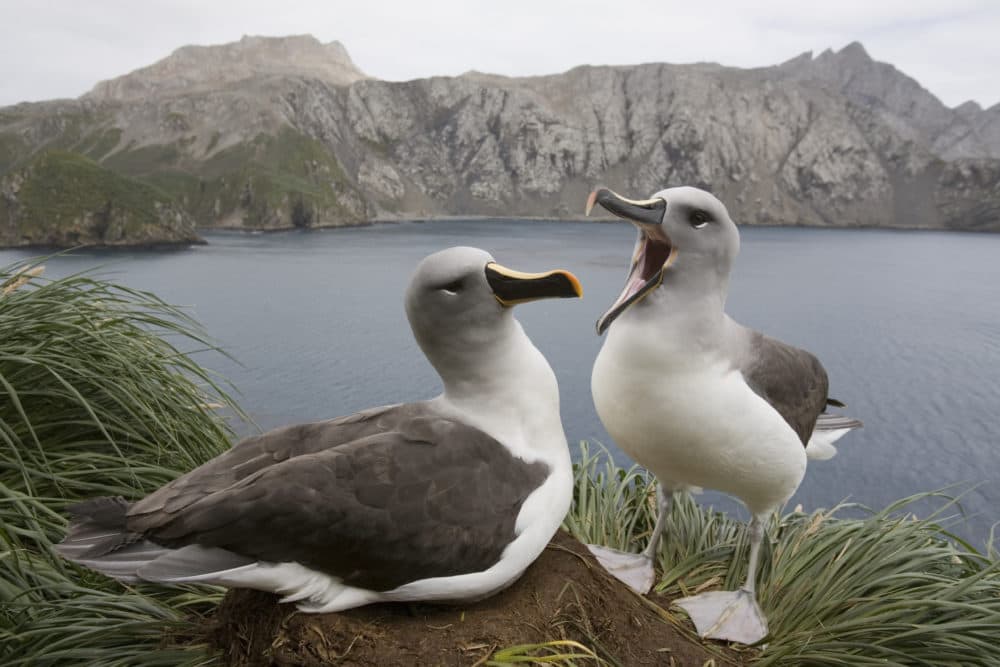Advertisement
Trouble in paradise: Stress caused by climate change leads to albatross divorce

The divorce rate among Americans has fallen in the past decade — but some other creatures are finding they just can’t make it work.
Black-browed albatrosses are one of many species of birds that tend to mate for life. But divorce rates are rising among these monogamous seabirds as more pairs fail to have offspring, according to a recent study in the Proceedings of the Royal Society.
The divorce rate jumped to a way above average 8% in 2017. The problem isn’t social media or the pandemic, but rather climate change.
Co-author and University of Lisbon researcher Francesco Ventura has been studying the black-browed albatross in the Falkland Islands off the coast of Argentina.
These birds don’t exactly file papers when it’s time to call it quits. For all 500 nests in the colony, researchers identify the breeding pairs and keep track of whether the birds successfully breed during each reproductive season, Ventura says.
“A divorce event is whenever both members of each breeding pair survive to the following season,” he says, “but at least one of them nested with another individual.”
A pair that fails to mate in one season is five times more likely to break up the following year, he says.
But regardless of the couple’s past, the probability of divorce rises alongside water temperatures, the study found.
Higher sea surface temperatures mean lower food availability, Ventura says. A scarcer supply of nutrients means the male birds need to spend more time out at sea foraging to put food on the table.
Albatross pairs arrive synchronously to the breeding grounds — and when males need to invest more time in foraging, they keep the females waiting, he says.
“Or both birds get stressed due to the lack of food and the higher struggle,” he says. “And the female might misinterpret this higher stress level as a poor performance by the mate and therefore decide to breed with another individual in the following season.”
Advertisement
Black-browed albatross populations have been increasing in the Falklands over the past decade, so the increase in divorces isn’t an immediate threat to the species, Ventura says.
“However, there are many seabird populations that are crashing,” he says. “And the idea that the environment … might have direct repercussions on seabird populations worldwide might be much more problematic for birds that have a population size of 150 breeding pairs, for example.”
This study marks the first quantitative evidence of environmental changes directly impacting divorce in monogamous seabirds — and it’s something researchers don’t usually see, Ventura says.
“It’s important to keep in mind that change might take unexpected routes,” he says.
Julia Corcoran produced and edited this interview for broadcast with Todd Mundt. Allison Hagan adapted it for the web.
This segment aired on December 7, 2021.

